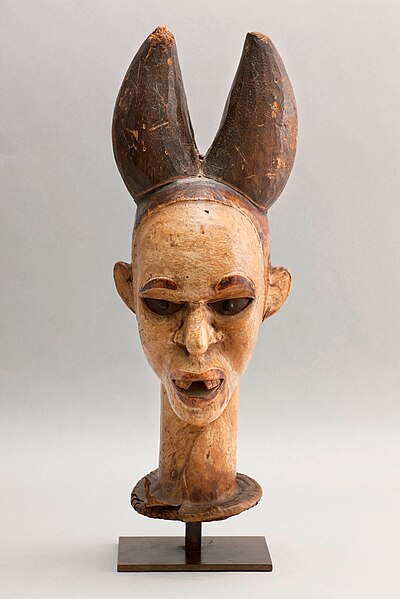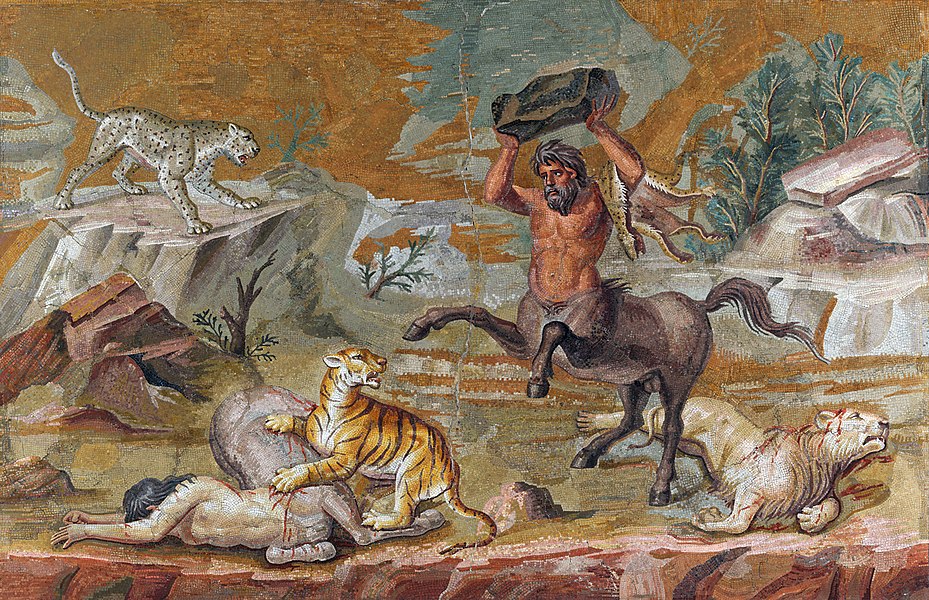 1
1title: Mask of <a href="https://en.wikipedia.org/wiki/Johann_Heinrich_Pestalozzi" class="extiw" title="en:Johann Heinrich Pestalozzi">Johann Heinrich Pestalozzi</a>.
artist: <div class="fn value"> J.M.Christen</div>
date: 1809<div style="display: none;">date QS:P571,+1809-00-00T00:00:00Z/9</div>
medium: en Terra cotta fr Terre cuite
current location: en|Yverdon castle fr|Château d'Yverdon Musée d'histoire d'Yverdon
source: [[User:Rama|Rama]] (2010)
credit: <a href="//commons.wikimedia.org/wiki/User:Rama" title="User:Rama">Rama</a> (2010)
license:CC BY-SA 2.0 fr
 2
2title: <div class="fn"> <span ><span dir="ltr" lang="en"><i>Egyptian masks</i></span></span><div style="display: none;">label QS:Len,"Egyptian masks"</div> <div style="display: none;">label QS:Lhy,"Եգիպտական դիմակներ"</div> </div>
artist: <bdi><a href="https://en.wikipedia.org/wiki/en:Martiros_Saryan" class="extiw" title="w:en:Martiros Saryan">Martiros Saryan</a> </bdi>
date: 1911<div style="display: none;">date QS:P571,+1911-00-00T00:00:00Z/9</div>
source: http://punto-di-vista.livejournal.com/51051.html<br /> http://www.gallery.am/hy/database-egov/item/207/
credit: <p><a rel="nofollow" class="external free" href="http://punto-di-vista.livejournal.com/51051.html">http://punto-di-vista.livejournal.com/51051.html</a><br></p> <a rel="nofollow" class="external free" href="http://www.gallery.am/hy/database-egov/item/207/">http://www.gallery.am/hy/database-egov/item/207/</a>
license:Public domain
 3
3title: Nigeria. Ejagham crest mask. Ngbe male society
artist: unknown
date: 20<sup>th</sup> century <div style="display: none;">date QS:P571,+1950-00-00T00:00:00Z/7</div>
dimensions: Size unit=cm height=37
current location: Institution:Raccolte Extraeuropee del Castello Sforzesco
source: [http://www.comune.milano.it/craai Raccolte Extraeuropee del Castello Sforzesco]
credit: <a rel="nofollow" class="external text" href="http://www.comune.milano.it/craai">Raccolte Extraeuropee del Castello Sforzesco</a>
description: Crest mask. The wooden head is covered with animal skin and is on a base of woven fibers which serve as linkage with the costume. The realistic oval face is light colored, with red lips and eyebrows. The mouth is open showing the teeth. On the top two black-dyed horns. <p>The Ngbe society, among the Ejagham of the Cross River, is a secret society of warriors holding commercial and political functions. The membership is built around a set of shared symbols, including <u style="background-color:yellow;" class="">masks</u>. </p> Usually <u style="background-color:yellow;" class="">masks</u> are covered with antelope skin but there are also human skin <u style="background-color:yellow;" class="">masks</u>, therefore the scholar Leo Frobenius assumed that warriors originally did not wear a mask on their heads, but the head of a killed enemy. Thus the mask is interpreted as a form of appropriation of the power of the dead.
license:CC BY-SA 3.0
 4
4title: Bwoom <a href="https://en.wikipedia.org/wiki/Mask" class="extiw" title="w:Mask">Mask</a>
artist: <div class="fn value"> <bdi lang="">Unknown author</bdi> </div>
date: 19<sup>th</sup> century <div style="display: none;">date QS:P571,+1850-00-00T00:00:00Z/7</div>
dimensions: 13 3/4 x 8 1/4 x 12 in. (35 x 21 x 30.5 cm) Height with beard: 22 7/16 in. (57 cm)
current location: Institution:Brooklyn Museum Brooklyn Museum location|collection=africa South Gallery, 1st Floor
source: [http://www.brooklynmuseum.org/opencollection/objects/4828 Online Collection] of [[w:Brooklyn Museum|Brooklyn Museum]]; Photo: Brooklyn Museum, 73.178_edited_version_SL1.jpg
credit: <a rel="nofollow" class="external text" href="http://www.brooklynmuseum.org/opencollection/objects/4828">Online Collection</a> of <a href="https://en.wikipedia.org/wiki/Brooklyn_Museum" class="extiw" title="w:Brooklyn Museum">Brooklyn Museum</a>; Photo: Brooklyn Museum, 73.178_edited_version_SL1.jpg
license:CC BY 3.0
 5
5title: <div class="fn"> Masks, pair</div>
artist: <div class="fn value"> Osborne</div>
date: George VI (1936 - 1952)-House of Windsor-English reign; 19 Mar 2007; Circa 1952; 06 Mar 2007; 1952
current location: Institution:Auckland War Memorial Museum
source: [http://api.aucklandmuseum.com/id/humanhistory/object/661786 Object record]<br> [http://api.aucklandmuseum.com/id/media/v/80844 Photo]
credit: <p><a rel="nofollow" class="external text" href="http://api.aucklandmuseum.com/id/humanhistory/object/661786">Object record</a><br></p> <a rel="nofollow" class="external text" href="http://api.aucklandmuseum.com/id/media/v/80844">Photo</a>
description: Cardboard constructed <u style="background-color:yellow;" class="">masks</u> depicting Cockrell and Hen. These <u style="background-color:yellow;" class="">masks</u> designed - made by Osborne, won first prize for best couple at the 1952 Auckland Arts Ball
license:CC BY 4.0
 6
6title: <div class="fn"> <span ><span dir="ltr" lang="en"><i>Centaur mosaic</i></span></span><div style="display: none;">title QS:P1476,en:"Centaur mosaic"</div> <div style="display: none;">label QS:Len,"Centaur mosaic"</div> </div>
artist: <div class="fn value"> Unknown<br><a rel="nofollow" class="external text" href="http://www.googleartproject.com/artist/unknown/4128544/">Details of artist on Google Art Project</a> </div>
date: (120 - 130)
dimensions: w915 x h585 cm
current location: Altes Museum, Staatliche Museen zu Berlin
credit: <p><a rel="nofollow" class="external text" href="//www.google.com/culturalinstitute/asset-viewer/SwHAQhNGz6l7_Q">SwHAQhNGz6l7_Q at Google Cultural Institute</a> zoom level scaled </p> down from maximum resolution
description: The centaur mosaic was found in the 18th century on the site of the sprawling, luxurious villa complex near Tivoli that once belonged to the Roman emperor Hadrian. The mosaic was found in situ along with other smaller ones that bore depictions of landscapes, animals and <u style="background-color:yellow;" class="">masks</u>. The relatively small central panel (emblema) formed part of the floor decoration for the dining room (triclinium) in the main palace. The various individual scenes of these mosaic pictures bear depictions of wild, inhospitable landscapes that deliberately contrast with idyllic ones featuring animals living in harmony with each other. The dangers of the wild are portrayed in this mosaic in the dramatic struggle between great cats and a pair of centaurs, mythological creatures with the head, arms, and torso of a man and the body and legs of a horse. On a rocky outcrop that hangs over a terrific chasm that runs parallel to the bottom of the picture, a pair of centaurs have been pounced on by great cats. While the male centaur has been able to defend itself successfully from the lion, the tiger has managed to bring the female centaur to the ground and is clawing her side. The male centaur rushes to his companion’s side, rearing his legs in the air while holding a rock aloft above his head. Undaunted, the tiger seems intent on not surrendering its prey. Even though one lion already lies fatally wounded, bleeding and with its claws retracted, the outcome of the struggle is anything but clear because in the background (whose spatial depth is achieved through the staggered arrangement of rock forms and impressive gradations of colour) we see yet another foe for the centaur: a leopard ready to pounce. While depictions in older Greek art tended to emphasise the bestial side of centaurs, later depictions increasingly focussed on their human qualities. Lucian, a writer from the 2nd century, records that the Greek painter Zeuxis (active around 400 BCE) became famous for his painting of a family of centaurs, including the young, set in a rural idyll. Similarly, Ovid, who lived around the turn of the millennium, wrote in moving verse of the death of a centaur couple. The extensive restoration work that was undertaken in the 18th and 19th century makes it difficult to date the mosaic with certainty. As a result, its dating ranges from Hellenistic to Hadrianic. There is broad agreement among scholars that the mosaic amounts to one of most virtuoso works of Roman mosaic art, which was inspired by a Greek work of art (either a panel painting or mosaic) from the Hellenistic period.
license:Public domain
 7
7title: <div class="fn"> <span ><span dir="ltr" lang="en"><i>Centaur mosaic</i></span></span><div style="display: none;">title QS:P1476,en:"Centaur mosaic"</div> <div style="display: none;">label QS:Len,"Centaur mosaic"</div> </div>
artist: <div class="fn value"> Unknown<br><a rel="nofollow" class="external text" href="http://www.googleartproject.com/artist/unknown/4128544/">Details of artist on Google Art Project</a> </div>
date: (120 - 130)
dimensions: w915 x h585 cm
current location: Altes Museum, Staatliche Museen zu Berlin
credit: <a rel="nofollow" class="external text" href="//www.google.com/culturalinstitute/asset-viewer/SwHAQhNGz6l7_Q">SwHAQhNGz6l7_Q at Google Cultural Institute</a> maximum zoom level
description: The centaur mosaic was found in the 18th century on the site of the sprawling, luxurious villa complex near Tivoli that once belonged to the Roman emperor Hadrian. The mosaic was found in situ along with other smaller ones that bore depictions of landscapes, animals and <u style="background-color:yellow;" class="">masks</u>. The relatively small central panel (emblema) formed part of the floor decoration for the dining room (triclinium) in the main palace. The various individual scenes of these mosaic pictures bear depictions of wild, inhospitable landscapes that deliberately contrast with idyllic ones featuring animals living in harmony with each other. The dangers of the wild are portrayed in this mosaic in the dramatic struggle between great cats and a pair of centaurs, mythological creatures with the head, arms, and torso of a man and the body and legs of a horse. On a rocky outcrop that hangs over a terrific chasm that runs parallel to the bottom of the picture, a pair of centaurs have been pounced on by great cats. While the male centaur has been able to defend itself successfully from the lion, the tiger has managed to bring the female centaur to the ground and is clawing her side. The male centaur rushes to his companion’s side, rearing his legs in the air while holding a rock aloft above his head. Undaunted, the tiger seems intent on not surrendering its prey. Even though one lion already lies fatally wounded, bleeding and with its claws retracted, the outcome of the struggle is anything but clear because in the background (whose spatial depth is achieved through the staggered arrangement of rock forms and impressive gradations of colour) we see yet another foe for the centaur: a leopard ready to pounce. While depictions in older Greek art tended to emphasise the bestial side of centaurs, later depictions increasingly focussed on their human qualities. Lucian, a writer from the 2nd century, records that the Greek painter Zeuxis (active around 400 BCE) became famous for his painting of a family of centaurs, including the young, set in a rural idyll. Similarly, Ovid, who lived around the turn of the millennium, wrote in moving verse of the death of a centaur couple. The extensive restoration work that was undertaken in the 18th and 19th century makes it difficult to date the mosaic with certainty. As a result, its dating ranges from Hellenistic to Hadrianic. There is broad agreement among scholars that the mosaic amounts to one of most virtuoso works of Roman mosaic art, which was inspired by a Greek work of art (either a panel painting or mosaic) from the Hellenistic period.
license:Public domain
 8
8title: <div class="fn"> Grotesque masks</div>
artist: unknown
date: between 1590 and 1605 <div style="display: none;">date QS:P571,+1500-00-00T00:00:00Z/6,P1319,+1590-00-00T00:00:00Z/9,P1326,+1605-00-00T00:00:00Z/9</div>
medium: paper
dimensions: Height: 165 millimetres : Width: 118 millimetres
current location: Institution:British Museum
source: https://www.britishmuseum.org/collection/object/P_1932-0217-45
credit: <a rel="nofollow" class="external free" href="https://www.britishmuseum.org/collection/object/P_1932-0217-45">https://www.britishmuseum.org/collection/object/P_1932-0217-45</a>
license:Public domain
 9
9title: <div class="fn"> Grotesque masks</div>
artist: unknown
date: between 1590 and 1605 <div style="display: none;">date QS:P571,+1500-00-00T00:00:00Z/6,P1319,+1590-00-00T00:00:00Z/9,P1326,+1605-00-00T00:00:00Z/9</div>
medium: paper
dimensions: Height: 165 millimetres : Width: 118 millimetres
current location: Institution:British Museum
source: https://www.britishmuseum.org/collection/object/P_1932-0217-36
credit: <a rel="nofollow" class="external free" href="https://www.britishmuseum.org/collection/object/P_1932-0217-36">https://www.britishmuseum.org/collection/object/P_1932-0217-36</a>
license:Public domain
 10
10title: <div class="fn"> Grotesque masks</div>
artist: unknown
date: between 1590 and 1605 <div style="display: none;">date QS:P571,+1500-00-00T00:00:00Z/6,P1319,+1590-00-00T00:00:00Z/9,P1326,+1605-00-00T00:00:00Z/9</div>
medium: paper
dimensions: Height: 165 millimetres : Width: 118 millimetres
current location: Institution:British Museum
source: https://www.britishmuseum.org/collection/object/P_1932-0217-55
credit: <a rel="nofollow" class="external free" href="https://www.britishmuseum.org/collection/object/P_1932-0217-55">https://www.britishmuseum.org/collection/object/P_1932-0217-55</a>
license:Public domain





